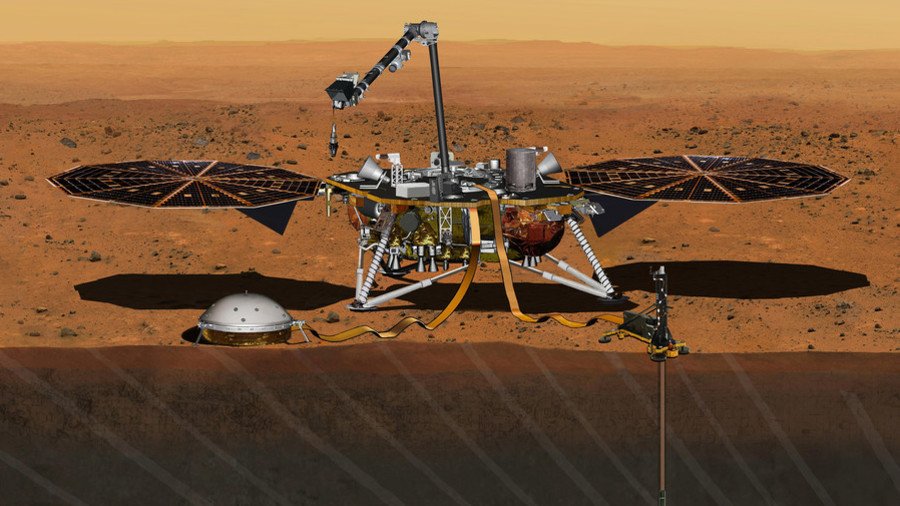‘Marsquakes’ mission: All you need to know about NASA’s InSight lander (VIDEO)

NASA’s new robotic geologist, Mars InSight lander, is due for take-off this weekend. Here, RT.com presents an explainer to help you understand what the mission is about, why it’s important and where is best to watch the launch.
READ MORE: ‘Marsquakes’: NASA to probe seismic activity on Red Planet (VIDEO)
What is it?
The Mars InSight lander is a $1billion US-European project designed to study subterranean events on Mars. In essence, the office desk-size machine checks the vital signs of the Red Planet, using a drill to burrow nearly five meters (16ft) below the surface, where it can closely monitor the temperature of Earth’s nearest neighbor.
Described by NASA’s science mission director Thomas Zurbuchen as “whole new level” in interplanetary excavation, InSight is a two-year mission – the equivalent of one Martian year.
Why is it important?
The lander’s instruments will also measure tremors known as ‘marsquakes’ as well as the wobbly rotation of Mars on its axis. Scientists hope the results will help them to better understand the makeup of the planet’s core as well as its broader history.
Previous Mars missions have never probed more than seven inches below the surface of the planet, focusing instead on surface rocks and minerals. “Mars is still a pretty mysterious planet,” said the mission’s chief scientist, Bruce Banerdt of NASA’s Jet Propulsion Laboratory. “Even with all the studying that we’ve done, it could throw us a curveball.”
NASA releases stunningly detailed image of Mars basin ‘favorable’ to life https://t.co/dqbP0ySg1Epic.twitter.com/St5NTjVp0k
— RT (@RT_com) January 27, 2018
When does it launch?
InSight will take off from California’s Vandenberg Air Force Base in the early hours of Saturday morning. It’s the first interplanetary mission launched from the west coast of the US.
Crowds are expected to gather at viewing points along the Californian coast to catch sight of the launch which will also be broadcast online on the mission’s website.
READ MORE: This Soviet pod was first man-made object to land on Mars (PHOTO)
Any interesting trivia for my next table quiz?
In a first for NASA, the vehicle carrying the lander will be followed by two small satellites, known as CubeSats, during its six-month journey to Mars. When Insight descends into the planet’s atmosphere, the two satellites, named WALL-E and EVE after the characters from the animated movie, will remain in orbit as a potential communications links with Earth.
Think your friends would be interested? Share this story!














